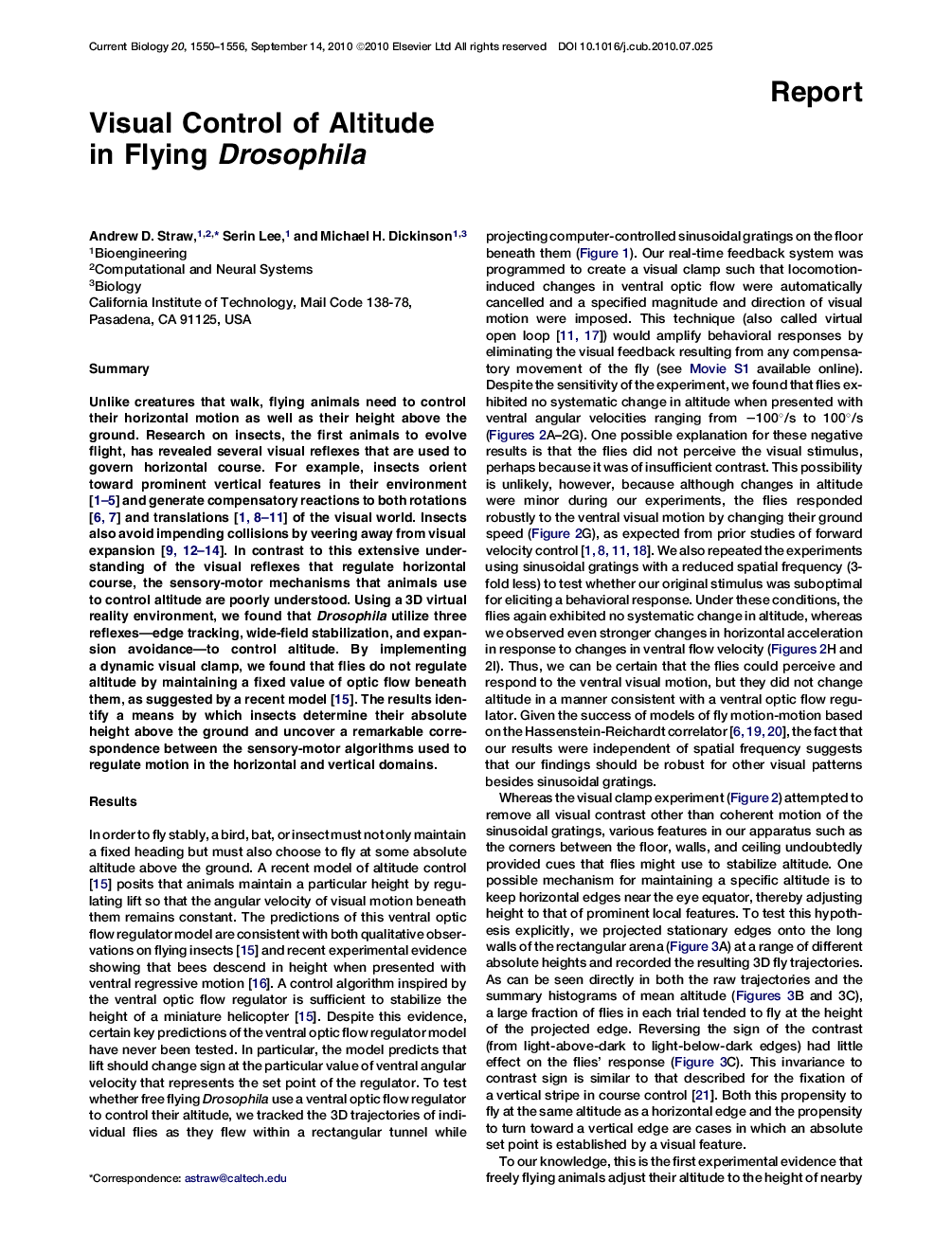| Article ID | Journal | Published Year | Pages | File Type |
|---|---|---|---|---|
| 2043432 | Current Biology | 2010 | 7 Pages |
SummaryUnlike creatures that walk, flying animals need to control their horizontal motion as well as their height above the ground. Research on insects, the first animals to evolve flight, has revealed several visual reflexes that are used to govern horizontal course. For example, insects orient toward prominent vertical features in their environment [1, 2, 3, 4 and 5] and generate compensatory reactions to both rotations [6 and 7] and translations [1, 8, 9, 10 and 11] of the visual world. Insects also avoid impending collisions by veering away from visual expansion [9, 12, 13 and 14]. In contrast to this extensive understanding of the visual reflexes that regulate horizontal course, the sensory-motor mechanisms that animals use to control altitude are poorly understood. Using a 3D virtual reality environment, we found that Drosophila utilize three reflexes—edge tracking, wide-field stabilization, and expansion avoidance—to control altitude. By implementing a dynamic visual clamp, we found that flies do not regulate altitude by maintaining a fixed value of optic flow beneath them, as suggested by a recent model [ 15]. The results identify a means by which insects determine their absolute height above the ground and uncover a remarkable correspondence between the sensory-motor algorithms used to regulate motion in the horizontal and vertical domains.
Graphical AbstractFigure optionsDownload full-size imageDownload high-quality image (130 K)Download as PowerPoint slideHighlights► Compared to visual rules for steering, insect altitude control is poorly understood ► Flies use vision to adjust their height to match that of nearby horizontal edges ► Experiments clamping visual motion in free flight refute ventral flow regulator ► Reflexes regulating altitude are remarkably similar to those used for steering
